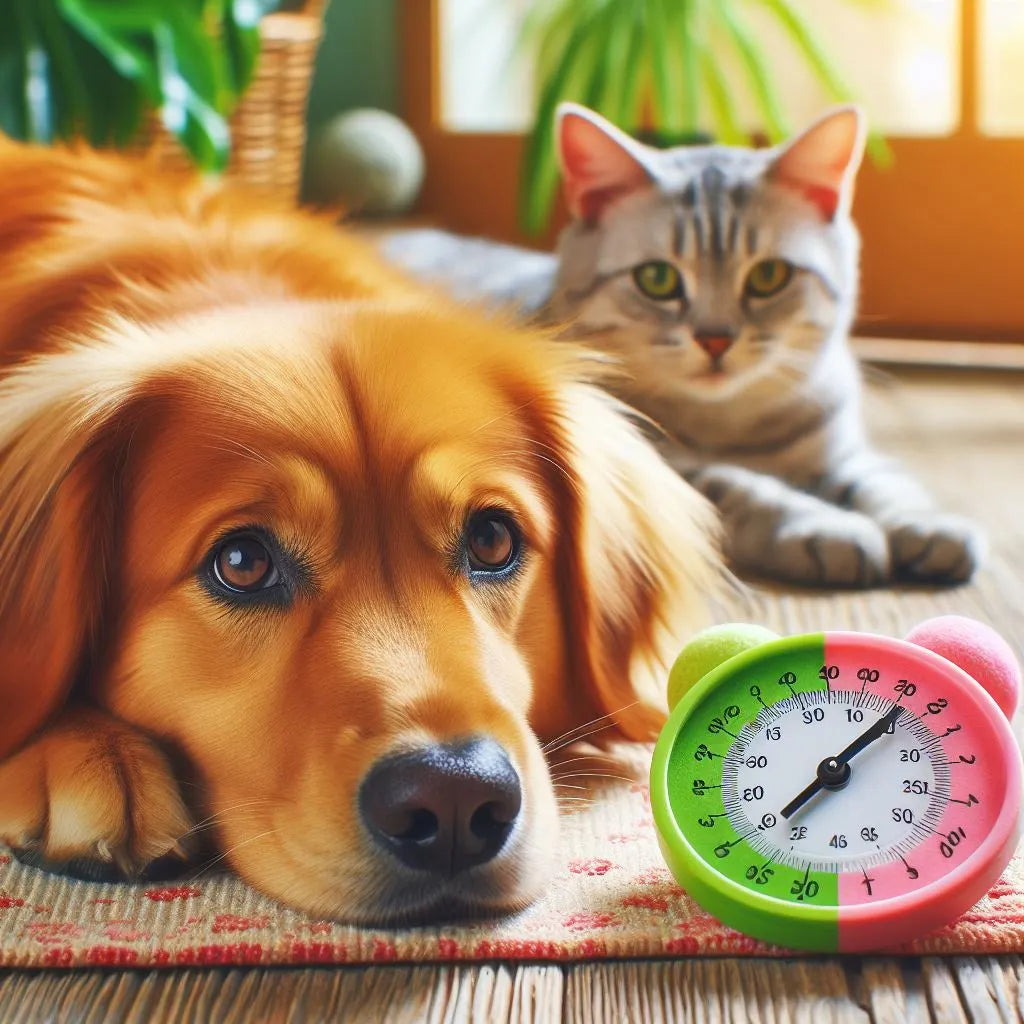As summer temperatures rise, it's crucial for pet owners to understand the serious risks that extreme heat poses to their furry companions. Heatstroke can be life-threatening for dogs and cats, and being aware of the symptoms and prevention methods can save your pet’s life.
The Dangers of Heat for Pets
1. What Happens During Heatstroke? Heatstroke occurs when a pet's body temperature rises to dangerous levels and they are unable to cool down. Dogs and cats are particularly susceptible because they primarily cool off through panting and limited sweating through their paws. When these mechanisms are overwhelmed, their body temperature can rise rapidly, leading to severe health issues or even death.
2. Why Are Pets at Risk in the Summer? Pets are at higher risk during hot weather for several reasons:
- High Temperatures: Direct exposure to high temperatures can quickly cause overheating.
- Humidity: High humidity levels make it harder for pets to cool down through panting.
- Poor Ventilation: Being left in poorly ventilated areas, such as cars or small, confined spaces, can increase the risk of heatstroke.
- Lack of Water: Insufficient water intake can lead to dehydration, exacerbating the effects of heat.
Symptoms of Heatstroke in Dogs and Cats
Recognizing the signs of heatstroke is crucial:
- Excessive Panting or Difficulty Breathing: Rapid and heavy panting in dogs, or open-mouth breathing in cats.
- Drooling: Excessive drooling, especially in dogs.
- Lethargy or Weakness: Unusual tiredness or weakness, stumbling, or reluctance to move.
- Vomiting or Diarrhea: These can be signs of severe overheating.
- Red or Pale Gums: Changes in gum color can indicate circulatory issues.
- Collapse or Seizures: In extreme cases, pets may collapse or have seizures.
How to Prevent Heatstroke in Pets
1. Keep Pets Hydrated Always provide fresh, cool water for your pets, especially during hot days. Consider adding ice cubes to their water bowls to keep the water cool longer.
2. Provide Shade and Ventilation Ensure your pets have access to shaded areas and well-ventilated spaces. Never leave them in a parked car, even for a short period.
3. Limit Exercise During Peak Heat Avoid walking or exercising your pets during the hottest parts of the day. Early morning or late evening is the best time for outdoor activities.
4. Use Cooling Products Consider using cooling products designed for pets. These can help regulate their body temperature and provide relief from the heat.
5. Recognize High-Risk Pets Certain pets are more susceptible to heatstroke, including brachycephalic breeds (like Bulldogs and Persians), older pets, overweight pets, and those with underlying health conditions. Take extra precautions with these high-risk pets.
What to Do If Your Pet Shows Signs of Heatstroke
Immediate action can save your pet's life:
- Move Them to a Cool Area: Immediately take your pet to a shaded or air-conditioned area.
- Offer Water: Encourage your pet to drink small amounts of cool water.
- Cool Them Down Gradually: Use cool (not cold) water to wet your pet's body, especially their belly, armpits, and paws. Avoid using ice-cold water as it can cause shock.
- Seek Veterinary Care: Heatstroke is a medical emergency. Contact your veterinarian or an emergency pet clinic immediately.
By understanding the risks of heatstroke and taking proactive measures, you can ensure that your pets stay safe and healthy during the hot summer months. Remember, a few simple precautions can make a big difference in preventing a potentially deadly situation.


Share and get 15% off!
Simply share this product on one of the following social networks and you will unlock 15% off!